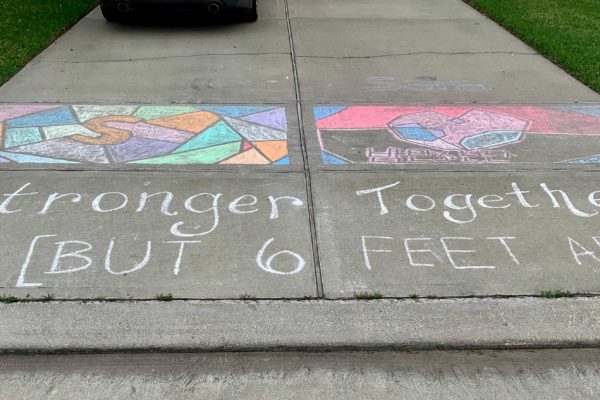Donor-advised funds (DAFs) have grown significantly in recent years. In 2018, DAFs reached new highs in four key metrics: dollars distributed from DAFs to charitable organizations, dollars contributed by donors to DAFs, the value of charitable assets under management in DAFs, and the number of individual DAF accounts.
As DAFs have reached new highs across these measures, the debates surrounding them have reached new volumes as well. Proponents of DAFs highlight that these vehicles have made giving easier and allow donors the time to think through their giving decisions. Critics, on the other hand, argue that DAFs are not transparent enough and delay nonprofits from getting donations. Some of these critics call for reforms such as changing the tax rules related to DAFs, requiring DAFs to distribute their funds within a set timeframe or to pay out a minimum percentage of their assets annually, and increasing the transparency of these accounts.
Across many of these debates, however, there is one crucial voice that is missing: the nonprofit perspective. ![]()
To bring these voices into the conversation, CEP surveyed our Grantee Voice panel of CEOs from nonprofit, grant-seeking organizations.[i] Through the survey, we sought to answer several key questions:
-
- Do nonprofits have preferences between the types of DAF-sponsoring organizations (i.e., national charities, community foundations, or single-issue charities, as defined by the National Philanthropic Trust)?
- What are the biggest advantages of receiving funding through DAFs?
- What are the biggest disadvantages of receiving funding through DAFs?
- What do nonprofit CEOs think about the debates surrounding DAFs?
Based on survey responses from 419 nonprofit CEOs on the panel (for a 34 percent response rate), here’s what we learned:
Do nonprofits have preferences between the types of DAF-sponsoring organizations?
We asked nonprofit CEOs whose organizations have received funding through DAFs at different types of sponsoring organizations if they have a preference between them.[ii] Most (80 percent) indicate that they do not have a preference, but among the 20 percent who do, almost all prefer community foundations.
What are the biggest advantages of receiving funding through DAFs?
The top advantage that nonprofit CEOs cite (22 percent) is that DAFs involve less of an administrative burden for nonprofits. ![]() In their own words, nonprofit CEOs explain:
In their own words, nonprofit CEOs explain:
[The] DAF handles all tax-related paperwork with the donor.
There is less work and cultivation of the donor, as they seem to come unsolicited.
There is very little additional administrative reporting burden required of our agency — allowing more of [our] work to go toward direct community services instead of administrative functions.
What are the biggest disadvantages of receiving funding through DAFs?
The top disadvantage that nonprofit CEOs cite (44 percent) is that DAFs hamper nonprofits’ ability to build personal relationships with donors. ![]() Nonprofit CEOs write:
Nonprofit CEOs write:
There are times when we receive funding through DAFs [and] we don’t know who they come from, or we can’t get their contact information from the DAF to properly thank them.
[It’s] hard to access [these donors], they come to us, we don’t go to them.
We are not able to specifically acknowledge the donor (no contact information is provided) so the relationship between the donor and the organization does not exist which hampers long-term engagement.
What do nonprofit CEOs think about the debates surrounding DAFs?
In their responses to a broad question about what they think of the debates surrounding DAFs, nonprofit CEOs mention more cons of DAFs than pros.[iii]
Among those who mention cons, almost half (47 percent) say that DAFs delay nonprofits from getting donations; 26 percent say that DAFs hamper nonprofits’ ability to build personal relationships with donors; and 24 percent say that DAFs are not transparent enough. Nonprofit CEOs say things such as:
While they provide opportunities that benefit donors, because there is not a requirement for annual distribution of funds, there is unlimited timeframe for the delay of billions of dollars making their way into the sector. So, while wealth managers are doing quite well by managing these funds, nonprofits are left to face the consequences and significant impact [that] this is having on [their] operations and their capacity to meet growing community needs for the services and supports they provide, often to those most vulnerable in our society.
I would appreciate if DAFs focused more on relationship building between philanthropy and the community, rather than a wall or gate keeper dividing the two. Individual donors have a lot to offer grantees beyond funding and grantees can provide more insight into community needs and successes through direct, in-person conversations.
I don’t find the DAF process to be at all transparent. It seems hidden to me, based on chance.
Among those who mention pros, over half (53 percent) say that DAFs make giving easier for donors. One nonprofit CEO says:
I believe it makes it easier for many donors to achieve their philanthropic goals — they have more of a ‘menu’ to choose from, and it is easy for them to spend just a few minutes selecting designated charities, assigning donation amounts, and instigating payments, without having to worry about the mechanics of individual donations.
Nonprofit CEOs appreciate that DAFs involve less of an administrative burden and understand that these vehicles make giving easier for donors. But they also find that DAFs delay their organizations from getting donations, hamper their ability to build relationships with donors, and are not transparent. As DAFs continue to reach new highs, it is important to ensure that the nonprofit perspective is included in the debates surrounding them. ![]()
Hannah Martin is associate manager, research, at CEP. Follow her on Twitter at @hannahqmartin.
[i] These nonprofits receive at least one grant from foundations giving $5 million or more annually. Of the 1,225 CEOs on the panel, 419 responded to the survey, for a response rate of 34 percent.
[ii] Most nonprofit CEOs (89 percent) said that their organizations have received funding through DAFs during the past three years. Of these, 92 percent have received funding through DAFs at community foundations; 38 percent from national charities; and 28 percent through single-issue charities.
[iii] Overall, 46 percent mentioned cons and 23 percent mentioned pros. 10 percent mentioned both pros and cons; 13 percent only mentioned pros; and 36 percent only mentioned cons.



